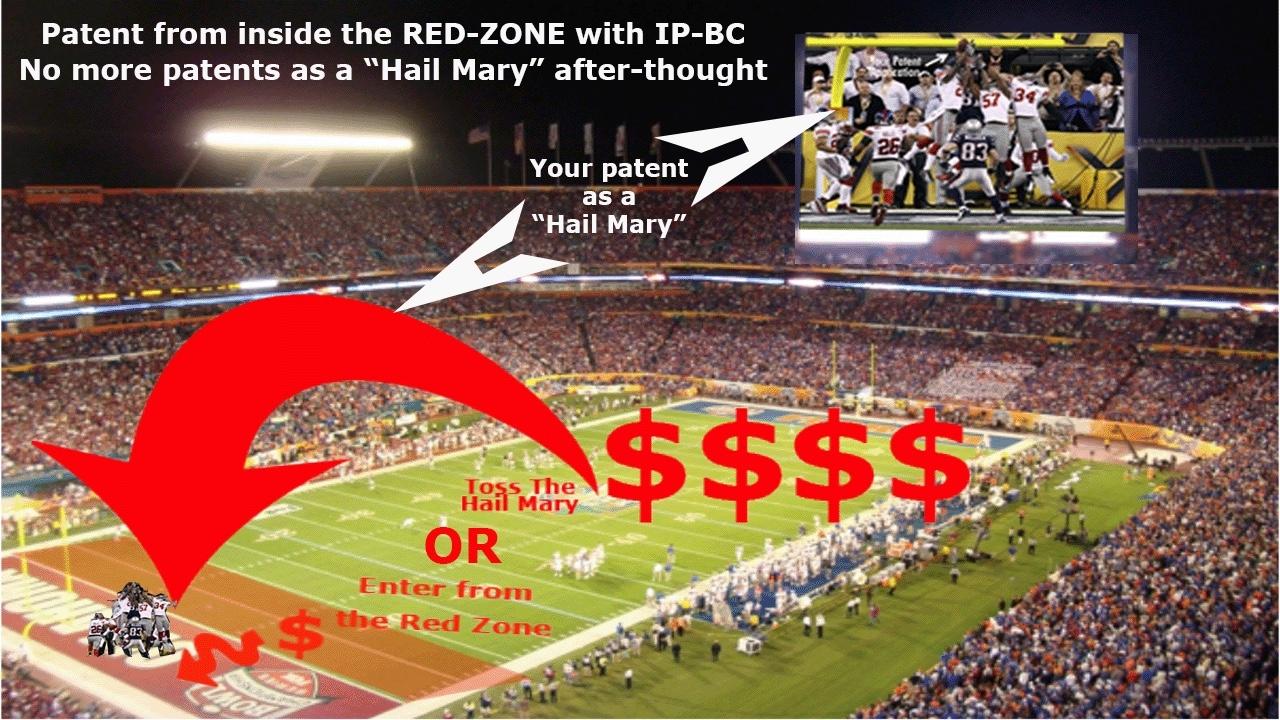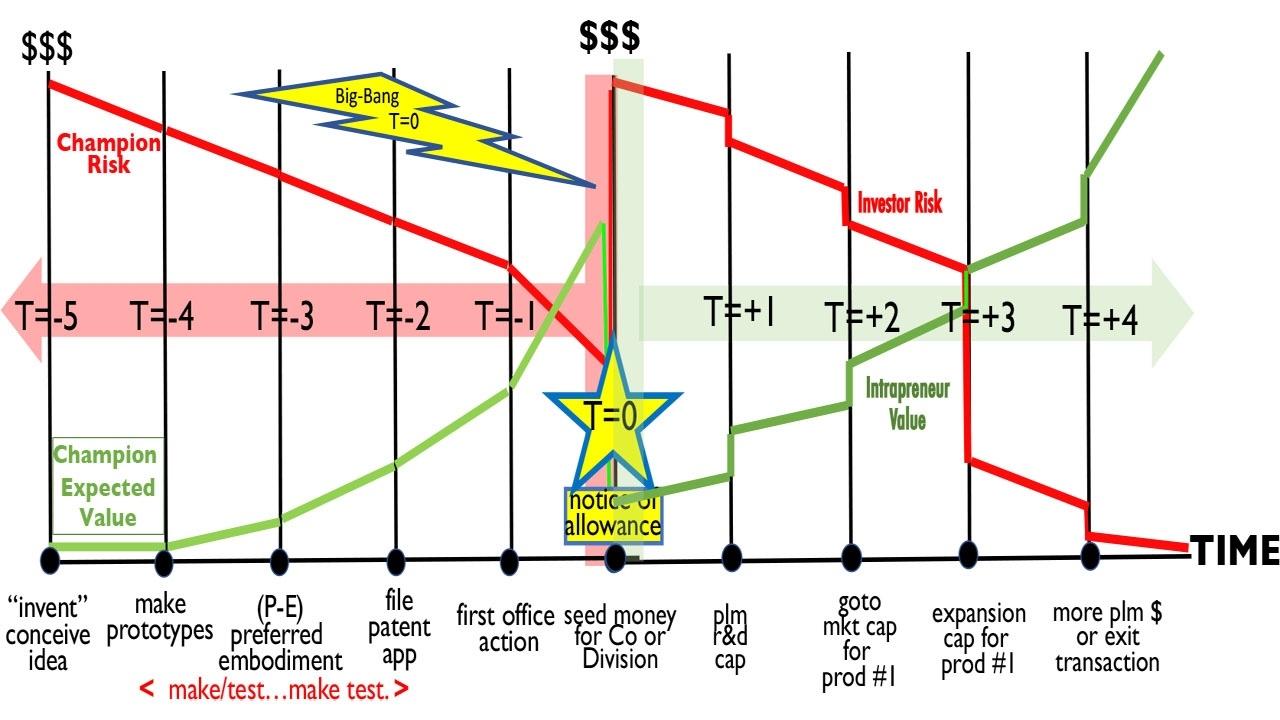IP SAVVYS Blog - select posts by role/title or by category
Why adopt TSM now-Publishing impact patents at the lowest cost

After you've spent thousands of dollars on a patent application and three times as much on prosecution, the last thing you want is for your invention to be forced into abandonment or to receive a notice of allowance on a weak patent with diminished claims. I’ve now developed a method that can enable you to change your conversations with innovator, counsel, and the patent examiner, achieve your patent objectives, and save more than 70% on your prior patent spend.
After 30 years as a serial innovator, inventor, and pro se patent holder (with 25 patents under my belt), I’ve turned my experience into a book, Utility Patenting for IP SAVVYS, as well as a complementary, self-paced instructional course, Intellectual Property BoostCamp (IP-BC). Each of the tools deliver what I call “The Schwartz Method (TSM),” a promise to streamline the patenting process while saving you big bucks.The book and course offer clear conversations focused on substantive patenting ta...
The primary reason patents get filed without being de-risked for FOARs

We've covered the race track metaphor as a way to explain the nature of FOARs which can occur with even bonafide patent applications filed with the greatest of intent. But how can this happen with a team of dedicated IP professionals? And why do we use the "Hail Mary" metaphor to describe what this type of IP workflow looks like?
A patent application that is drafted and filed under time pressure, due to internal deadlines or 1 year rule restrictions has the greatest risk of carrying potentially Fatal Office Action Rejections (FOARs) in it's DNA. There are many reasons why this pressured delivery is part of the process and none of them are good reasons or excuses for allowing this to happen. If patent drafting is not part of the product development roadmap, then you and your team is susceptible to this ill fated situation. It is important to understand the symptoms of this in your IP workflow and to Use TSM and BBT to rework your IP sequence of events so that the patent application is ...
De-risking patents from FOARs/Get SCA & make them AIRTIGHT

This series of blog posts seeks to set the record straight on the goal of getting Utility Patents to publish with SCA (Sustainable Competitive Advantage).
In our definition, a patent that publishes with a CLEAN FILE-WRAPPER (no FATAL flaw do-over's) and with CLAIMS that broadly scope the PREFERRED-EMBODIMENT (P-E), will turn out to be patents with SCA.
Why? First, their chain of ownership will be identified with a published patent that has the right look and feel. Second, when ANYONE looks at the File Wrapper ( a public document from the Patent Office), they won't surface any chinks in the armor out of the "starting block". Thirdly, when they look at the object of their invention and what THEY want to go to market with, it will READ on the primary claims in the published patent ( and give them a moment of pause), and in this pause THEY WILL RECONSIDER whether to attempt to file a post publication action in an attempt to invalidate your patent.
Good enough. The simple IP model for Ut...
Schwartz's Big Bang Theory (BBT) of IP Capitalization : Unifying concept of IP-BC

The BBT takes apart the sequence of events from conception to market exit, assigns time stamps to critical events, and identifies T=O as the instance when the "universe comes into being"...the notice of allowance. This simplification, allows Schwartz to take a look "backwards in time" from T=0 and disect the risk components related to achieving Sustainable Competitive Advantage (SCA) patent applications. As you will see, the greatest risk is from T=-4 to T=-2.
Often what's hard can be easy, and sometimes what should be easy is actually very hard. The single most important catalyst in making hard things easier is a problem solving angle, often called a Point of View (POV). If the right POV is used, then a problem can be dissolved or broken down into solvable components, that in line of a sensible sequence of events, results in "problem solved".
With IP, one of the more complex domains to secure patents with SCA ( Sustainable Competitive Advantage), I have adopted a unifying POV called...
Patents with SCA are de-risked from FOARs before being filed

Sustainable Competitive Advantage is an illusive goal for published patents. Will they be "great enough" to stand up to the test of market application (the right or license to make, use or sell). For SCA, Fatal Office Action Rejections (FOARs) must be anticipated and avoided before the patent application is filed. FOARs cause patents to be abandoned, or weaken them substantially by exposing patent flaws in the File Wrapper which publishes with your patent when it's granted.
The nature of the rules R101,102,103,111,112,& 113 are covered in the IP-BC Starter-Kit and an approach to drafting airtight patents with SCA based on using The Schwartz Method (TSM) is explored.
Understand this and accelerate down the IP corridor of uncertainty.
May the Schwartz be with you.
2020 Post AIA Lawsuit...when can IPR be invoked-SCA implications

Why does the current lawsuit by Intel, Apple Cisco and Google to enable the use of IPR during a pre-trial licensing hearing, or during the trial itself make the case even greater for getting utility patents with SCA?
First, consider the defendant and plaintiffs goals. The USPTO as defendant has a rule under AIA that allows IPR's to be invoked after a patent is published. The purpose of this was to assist an overloaded patent office in weeding out invalid patents, augmenting the prior means for this which was called an interference proceeding. In principle, the idea of an IPR was painful to patent holders, independent inventors, and licensors in so far as their right to what might have otherwise been a claim in a published patent could be terminated by forces outside of the patent office after publishing...tantamount to having the "rug pulled out from under them".
The USPTO did propose a refinement on IPR's that would prevent them from being used if a case was going to trial, had a p...
Do I wait to GOTO market until my patent Issues?

BBT shares a set of events that lock-step toward the blessed Notice of Allowance for a patent on one of your chosen inventions. It is the primary theme of IP-BC and is used to establish all the course lessons and tools you can put to best practice use.
The sequence of events you will engage in to file an airtight patent application, de-risked from FOARs will take a natural course IF YOU STAY FOCUSED on identifying and prototyping the P-E, along with drafting layman claims for the object of enablement that quiesces to BEST MODE with the minimum number of "elements".
So while that's going on in R&D and Product Marketing, on the other side of T=0 (MARKET ENTRY), Business Development/Sales is making moves to establish the commercial value of what you have been in the process of protecting.
MISCONCEPTION: we must wait till the patent issues before selling it in the marketplace.
In this first-to-file world, and with the acceleration of innovation, the iterative nature of patenting and s...

